Walt Whitman’s America Through Edward Weston’s Eyes
Weston may not have studied Whitman’s poetry before embarking on a photographic road trip for a special edition of “Leaves of Grass.” Yet while having the time of his life, he also got the spirit right.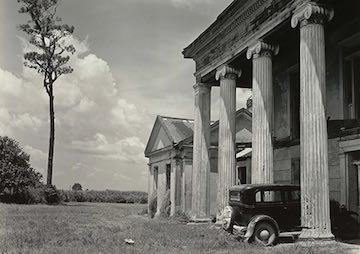
This image, titled “Woodlawn Plantation House, Louisiana, 1941,” is one of several photographs by Edward Weston on display as part of the Huntington Art Collections’ exhibit “Real American Places: Edward Weston & Leaves of Grass.” (Edward Weston / The Huntington Library, Art Collections, and Botanical Gardens ©1981 Center for Creative Photography, Arizona Board of Regents
In the year 1940, publisher George Macy of the Limited Editions Club hit on a brilliant idea for his pricey book line aimed at collectors: a new edition of “Leaves of Grass,” poet Walt Whitman’s rhapsodic elegy to what Macy called “the real American faces and the real American places,” illustrated with photos by Edward Weston. Macy’s slogan makes a handy title for the new exhibit, “Real American Places: Edward Weston & Leaves of Grass” at The Huntington Art Collections in San Marino, Calif. On view through March 2017, it includes roughly half of the 49 photos chosen for the ill-fated edition.
“Weston never explicitly said he was going to illustrate Whitman,” James Glisson, co-curator of the show with Jenny Watts, told Truthdig. “He didn’t tell Macy until very far into the project.”
The 54-year-old Weston was coming off a crowning career achievement the same year, the publication of “California and the West,” financed through a Guggenheim Fellowship — the first awarded to a photographer. The book represented a departure for Weston, who until then was known primarily as a studio photographer. He had taken his first road trip, covering 23,000 miles with his lover of 10 years, Charis Wilson, 28 years his junior, who wrote the book’s highly praised text and became his second wife along the way.
By May 1941, they were ready to do it again, loading up an eight-cylinder Ford dubbed Walt and setting off from Wildcat Hill, their sanctuary in Carmel, Calif. This journey would cover 20,000 miles through 24 states over eight months, with Macy shelling out for expenses up to $1,000 over six months, including printing and supplies.
Their first significant stop was Boulder, Colo., where Weston photographed the Boulder (now Hoover) Dam. At a subsequent stop in Port Arthur, Texas, he captured more than a dozen frames of silvery spherical oil tanks. “California and the West” had featured natural landscapes, but man-made objects now took over his frame.
The first progress report to reach Macy gave him a real fright. What did otherworldly globes in Texas have to do with Walt Whitman? In his original proposal, Macy requested that Weston “illustrate every other line in Whitman’s poetry,” which, taken literally, would require thousands of photos to match even half the images in the text. “I hope this is a job which you can tackle quickly,” he added without irony.
“He’s very controlling,” said Watts, who pored through correspondence between the two. “He comes in with very strong ideas of what he wants. He’s not very good at communicating it to the artist. Then he gets very horrified when something comes back that’s not what he had envisioned.”
Although Macy had run into creative differences with artist Henri Matisse while working on another masterpiece dense with illusion, James Joyce’s “Ulysses,” it would be presumptuous to blame the publisher for the disagreement with Weston. Matisse hadn’t bothered to read the book, delivering drawings based on the Greek mythical character instead of Joyce’s text, for a price of $5,000. In Weston’s case, he “didn’t give a hoot about ‘Leaves of Grass’ — he was having the time of his life,” according to Wilson’s 1998 memoir, “Through Another Lens.”
Whitman is mentioned only five times in 230 pages of notes chronicling the journey. Weston explained himself this way: “My plan for work on this commission was direct: I photographed anything and everything I saw which excited me. I could do no more. Since Whitman’s poems cover all walks of life, and every high- and byway, I couldn’t easily neglect him.”
This gave him license to expand his parameters, photographing places and people he was seeing for the first time. Gone are the wide horizons of “California and the West,” replaced by works of man — a Louisiana church, a bottle farm in Ohio, the Brooklyn Bridge. Each is captured as an item on a list, ordered so as to tell a story, which is similar to how Whitman commonly structured his verse:
“I believe a leaf of grass is no less than a journeywork of the stars, And the pismire is equally perfect, and a grain of sand, and the egg of the wren, And the tree-toad is a chef-d’ouvre for the highest …”
“There’s this idea of movement and journey, one by foot, the other by car, that acts as a temporal element to what they’re doing,” Glisson said, completing the parallels between Weston and Whitman. Although Weston captured images of many places, he failed to capture many faces. But the few he did are among his finest portraits. There are Mr. and Mrs. Fry of Burnet, Texas, an elderly white couple sitting in the doorway of their home, and Brown Jones of Athens, Ga., cook and choirmaster in a neat suit and tie, merging with the shadows in a classroom. A Yaqui Indian from Tucson, Ariz., holds a ceremonial staff as he stares straight into Weston’s camera, while William Edmundson of Nashville, Tenn., is shown taking a break from sculpting gravestones.
Early in his career, Weston worked out of a studio in Glendale, Calif., and in the 1920’s Mexico City, shooting portraits and nudes of his then-lover, photographer Tina Modotti, and palling around with artists like Diego Rivera. Upon his return to the U.S., he took his camera outdoors, shooting tidal pools and exquisite nudes of Wilson on a sand dune.
With Ansel Adams and Imogen Cunningham, he was a principal member of Group f/64, a West Coast school of photography with a set of aesthetic principles laid out by Weston in a manifesto. He had freed himself from the studio — just as the peripatetic Whitman had walked away from his desk to seek inspiration among everyday people.
“I think he was tired of portraiture,” Watts explained about the imbalance among the “Leaves of Grass” photos. “Charis talked about difficulty finding people who were ethnographically different — Indians, black people, workers. It takes time to cultivate those relationships and find out who you’re going to photograph and set it all up. And I think he was feeling the press of time.”
Time was an issue from the very beginning of the “Leaves of Grass” project, when Macy suggested that Weston spend a month driving around Southern California capturing the “melting pot” nature of America. Making matters worse, the market for specialty limited editions was drying up as uncertainty loomed with the Nazis ravaging Europe. Meanwhile, conflicts at home included the one brewing between Weston and Wilson.
“At one point, she wants to stay and continue filling out her notes, and Weston is in a huge rush,” Watts recalled from her research. “He looks at her and gets very angry. ‘It’s my grant. We’re going.’ She saw he doesn’t see it as an equal partnership. When she gets to the East Coast, she falls in love with someone, a businessman.”
With news of Japan’s attack on Pearl Harbor and the U.S. entry into World War II, their journey came to an end. They returned to Los Angeles in January 1942 with 800 negatives, 70 of which were sent to Macy. Anxious to publish before the market collapsed, he chose 49 photos and rushed the book into production, printing 1,000.
Literal-minded to the end, Macy set the photos on a putrid green mat meant to signify the color of leaves. Weston was horrified, inscribing a copy of the book to his friends Sally and David McAlpin: “No apologies for the illustrations, but for their presentation, my tears.”
It was a sour note to end an illustrious career on. Weston was diagnosed with Parkinson’s disease in 1945 and took his last photo three years later. Wilson left photography and amicably divorced Weston in 1946, marrying labor activist Noel Harris. On New Year’s Day 1958, Weston had only $300 in his bank account when he died at home on Wildcat Hill. His ashes were scattered at nearby Point Lobos, renamed Weston Beach.
Independent journalism is under threat and overshadowed by heavily funded mainstream media.
You can help level the playing field. Become a member.
Your tax-deductible contribution keeps us digging beneath the headlines to give you thought-provoking, investigative reporting and analysis that unearths what's really happening- without compromise.
Give today to support our courageous, independent journalists.
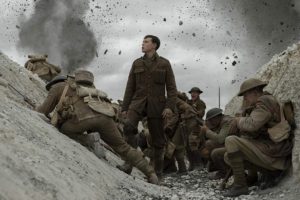
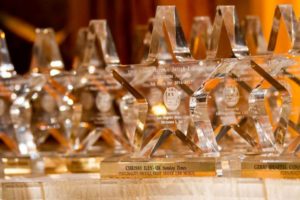
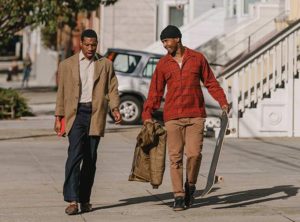
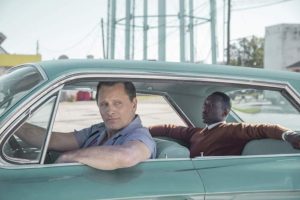
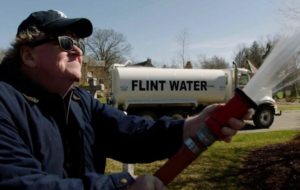

You need to be a supporter to comment.
There are currently no responses to this article.
Be the first to respond.